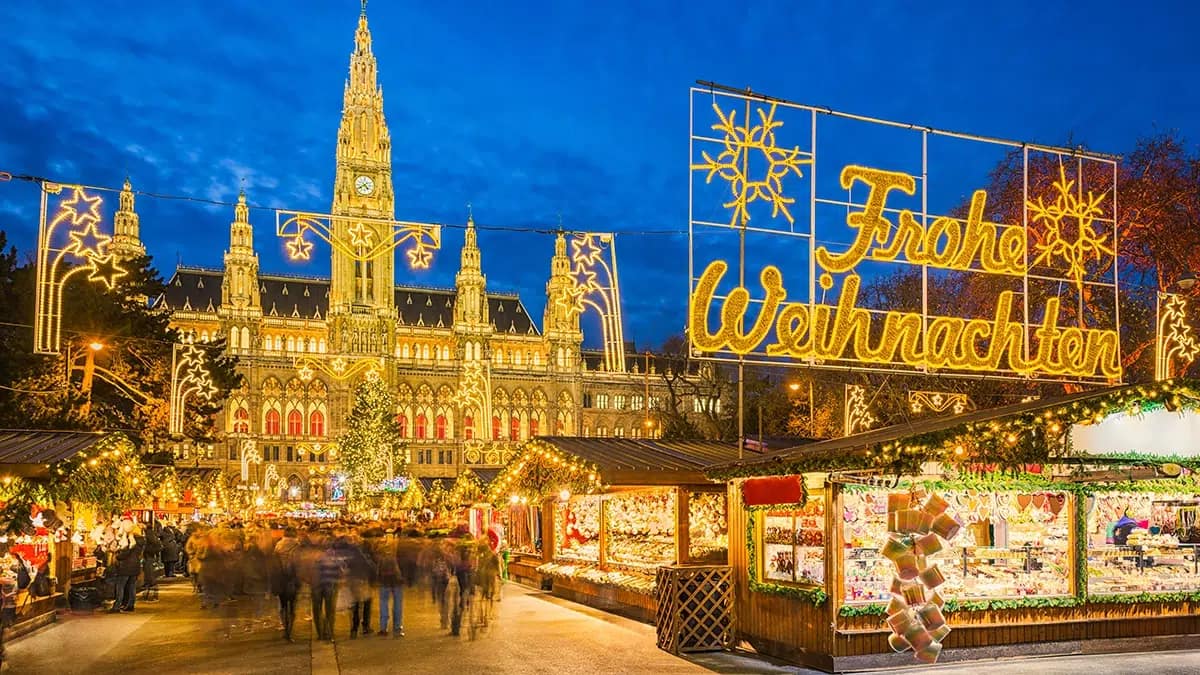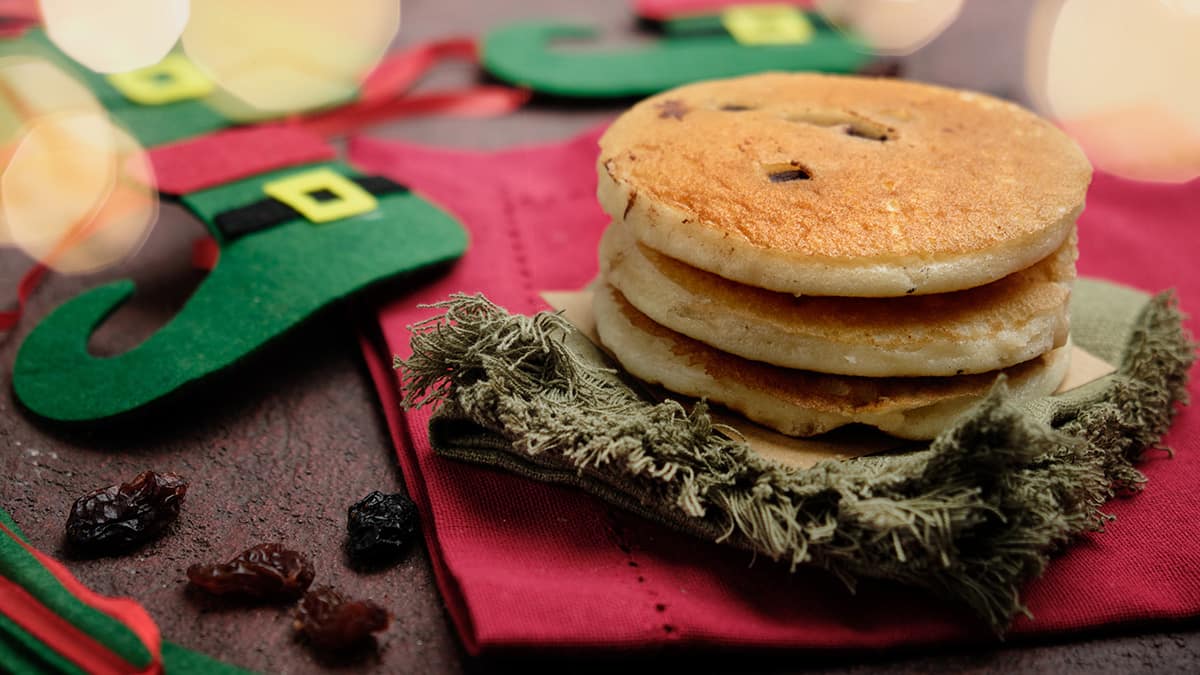Imagine a winter wonderland filled with twinkling lights, festive markets, and unique traditions that capture the essence of the holiday season. This is what Christmas in Austria feels like, a magical experience that brings the whole country together in celebration. In this blog post, we will explore the fascinating customs, fun facts, and celebrations that make Austrian Christmas truly special. Let us embark on a journey through the Austrian Alps and uncover the heartwarming traditions that await.
Short Summary
Austrian Christmas is a unique and magical celebration full of interesting customs, symbolic flames of hope, mythical performances and classical music.
Austrian Christmas Markets offer an array of crafts, decorations and food & drink to celebrate the holiday season.
Popular traditions include baking biscuits, lighting Advent wreaths & opening Advent calendars as well as seeking shelter for those in need with Anklöpfler custom.
Austrian Christmas Markets
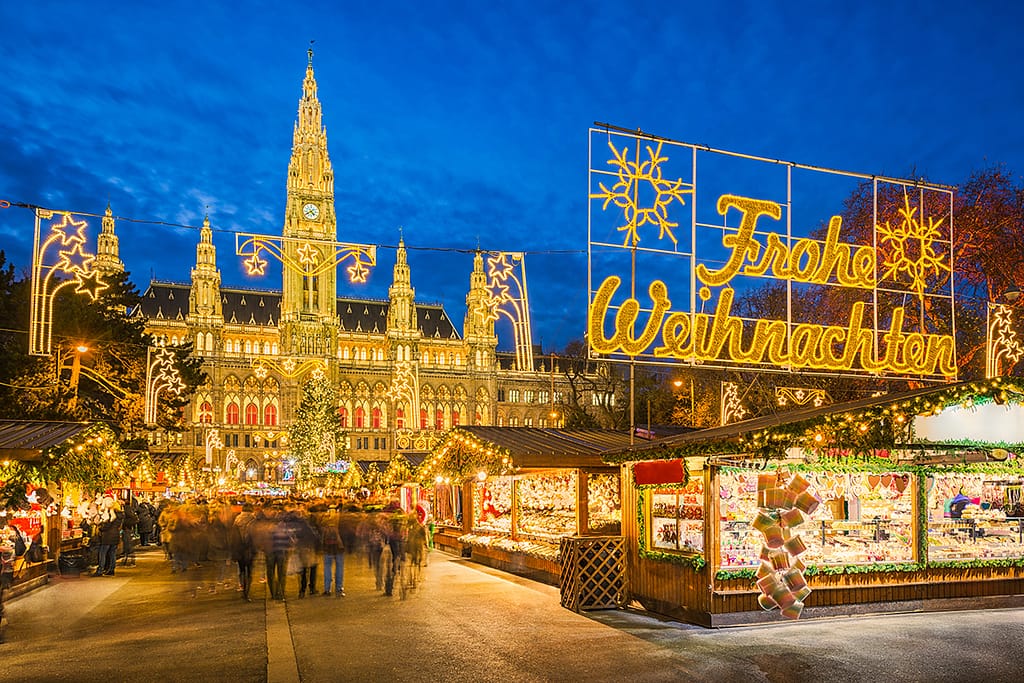
Christmas markets are a quintessential part of the holiday season in Austria, where locals and visitors alike gather to indulge in the festive atmosphere. These temporary markets offer an array of local crafts, decorations, and food and drink specialties, including gingerbread and sugar roasted almonds. The Christmas season is a highly respected occasion in Austria, with traditional practices and decorations creating a festive ambiance.
Advent is a particularly cherished time in the Austrian Alps, marked by customary practices such as baking biscuits, decorating for Christmas, singing carols, and lighting the Advent wreath. The Advent wreath, adorned with four candles, serves as a calendar; every Sunday of Advent, a new candle is lit to mark the passing of time until Christmas Eve. Another beloved tradition is the Advent calendar, with its 24 windows opened consecutively from December 1 to December 24, counting down to Christmas.
On Christmas Eve, Austrian families gather around the illuminated Christmas tree, adorned with beautiful christmas decorations, singing carols and enjoying christmas music, while opening presents delivered by the Christkind, also known as the christ child, an angelic figure with white feathery wings and a halo. This joyous occasion is often preceded by a visit to the Christmas market, where families enjoy the sights, sounds, and tastes of the holiday season, truly making it feel like christmas time.
Festive Delights: Austrian Christmas Cookies
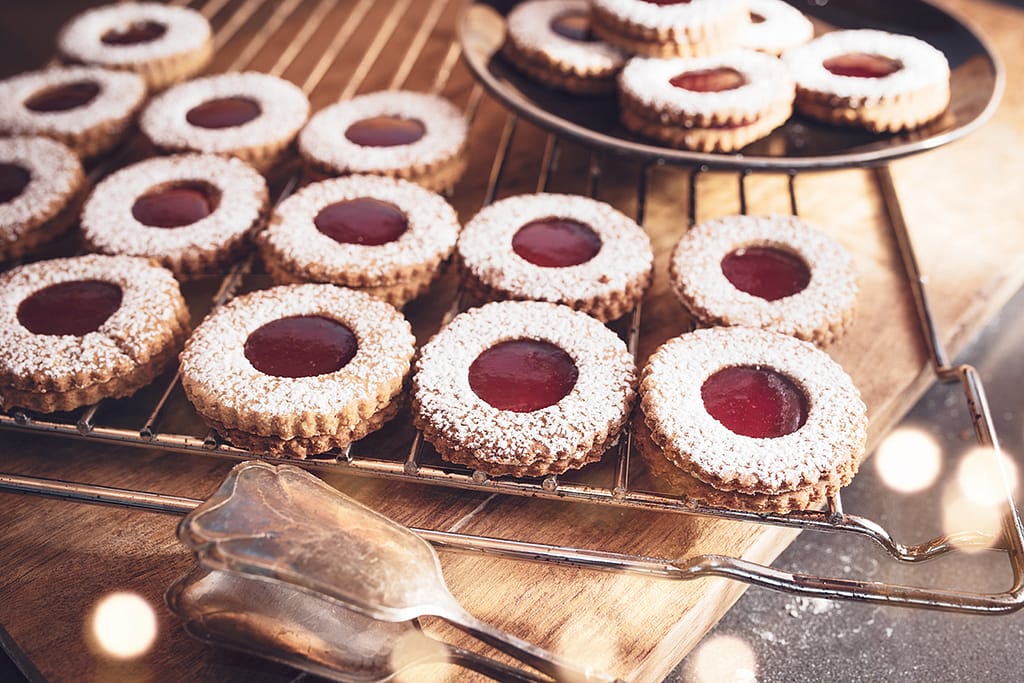
Austrian Christmas cookies are a scrumptious part of the holiday season, enjoyed by both locals and visitors alike. Popular cookies like Vanillekipferl, Spitzbuben, and gingerbread are savored by people of all ages, adding to the festive cheer. These delightful treats not only satisfy the taste buds, but also contribute to Austria’s high average life expectancy.
Among the most traditional Austrian Christmas biscuits are Linzer Eyes, light and fluffy Kokosbusserl, and Zimtsterne with their sugar and lemon glaze. Zelten is a popular treat amongst Italians. It is composed of chopped candied and dried fruit, nuts and spices. These festive delights are often enjoyed with a warm cup of mulled wine or hot chocolate, making them the perfect accompaniment to the Christmas season.
Viennoiseries, a selection of Viennese-style treats, also grace the tables during the Austrian Christmas season. From flaky pastries to intricately decorated cookies, these sweets are a testament to Austria’s rich culinary heritage and a delicious way to celebrate the holidays.
Symbols of Good Fortune: Lucky Charms in Tirol
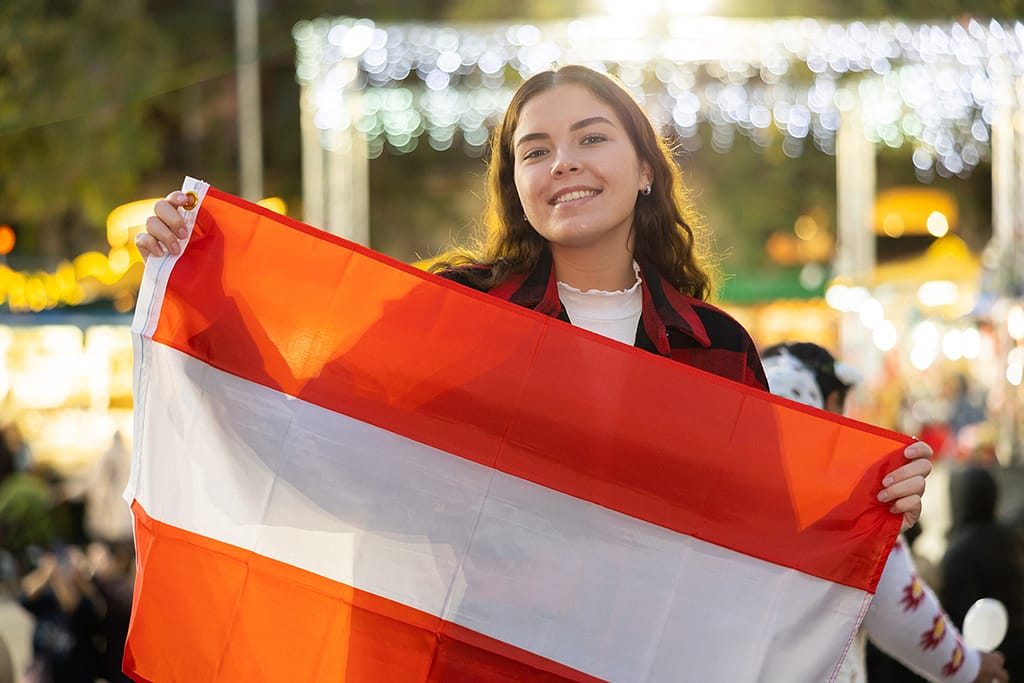
In Tirol, lucky charms and customs play an essential role in bringing good fortune during the Christmas season. One such tradition is the Feast of Saint Barbara, celebrated on December 4. On this day, cherry branches are brought into homes, and it is believed that if they blossom before Christmas Eve, good fortune and fertility will follow.
Another symbol of good fortune in Tirol is the Austrian flag, which is one of the oldest national flags in the world. This red and white symbol is proudly displayed during the Christmas season, adding to the festive atmosphere and representing the country’s rich history and cultural heritage.
These symbols and customs not only add a unique touch to the Christmas celebrations in Tirol, but they also serve as a reminder of the importance of embracing traditions and the power of positive beliefs in shaping our lives.
St. Nicholas and Krampus: A Dual Tradition
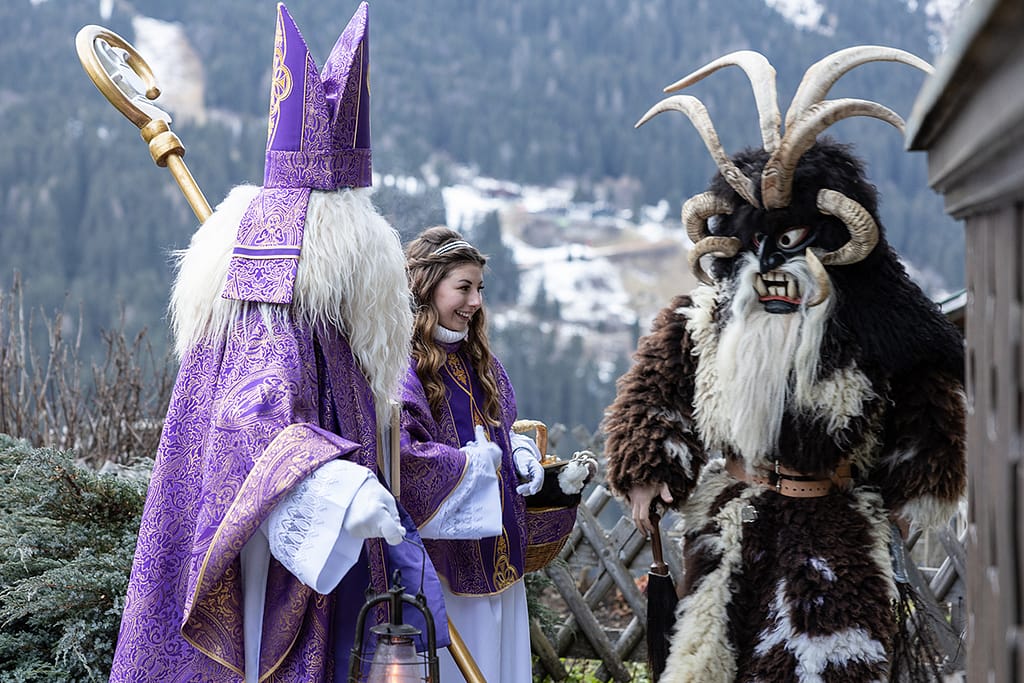
St. Nicholas, the Austrian equivalent of Santa Claus, also known as Father Christmas, plays a significant role in the country’s Christmas traditions. On December 6, he visits households to reward well-behaved children with small treats. However, accompanying St. Nicholas is his dark counterpart, Krampus, a beast-like figure who enforces discipline among misbehaving children with his rod.
Krampus parades are a common sight in Austria during the Christmas season, with individuals dressing up as Krampus and marching through towns, creating a cacophony of noise and intimidating onlookers. This dual tradition of St. Nicholas and Krampus is a fascinating aspect of Austrian Christmas, highlighting the balance between reward and discipline in the holiday celebrations.
As families gather to celebrate the festive season, the presence of both St. Nicholas and Krampus serves as a reminder of the importance of good behavior, kindness, and forgiveness during this special time of year.
The Anklöpfler Custom: Seeking Shelter
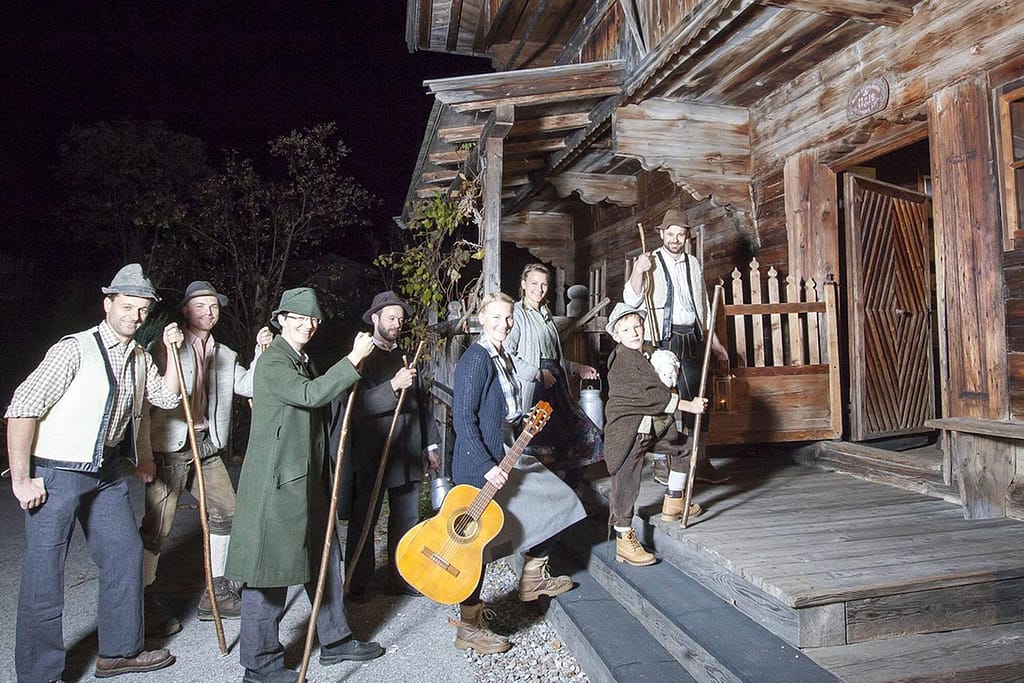
The Anklöpfler custom is a Tirolean tradition where locals re-enact Mary and Joseph’s journey in search of shelter, going door-to-door and singing carols. This custom, which is highly respected in the Zillertal Valley, sees groups of singers, known as Anklöpfler, visiting homes during the Advent season, spreading festive joy and goodwill.
This heartwarming tradition not only brings communities together, but also serves as a reminder of the true meaning of Christmas – love, compassion, and the importance of providing shelter and support to those in need. The Anklöpfler custom is a testament to the strong sense of community and togetherness that characterizes the holiday season in Austria.
In a world that sometimes seems to have forgotten the true meaning of Christmas, the Anklöpfler custom serves as an inspiring example of a tradition that focuses on the values of love, kindness, and compassion that lie at the heart of the holiday season.
Tirolean Nativity Scenes: Art and Devotion
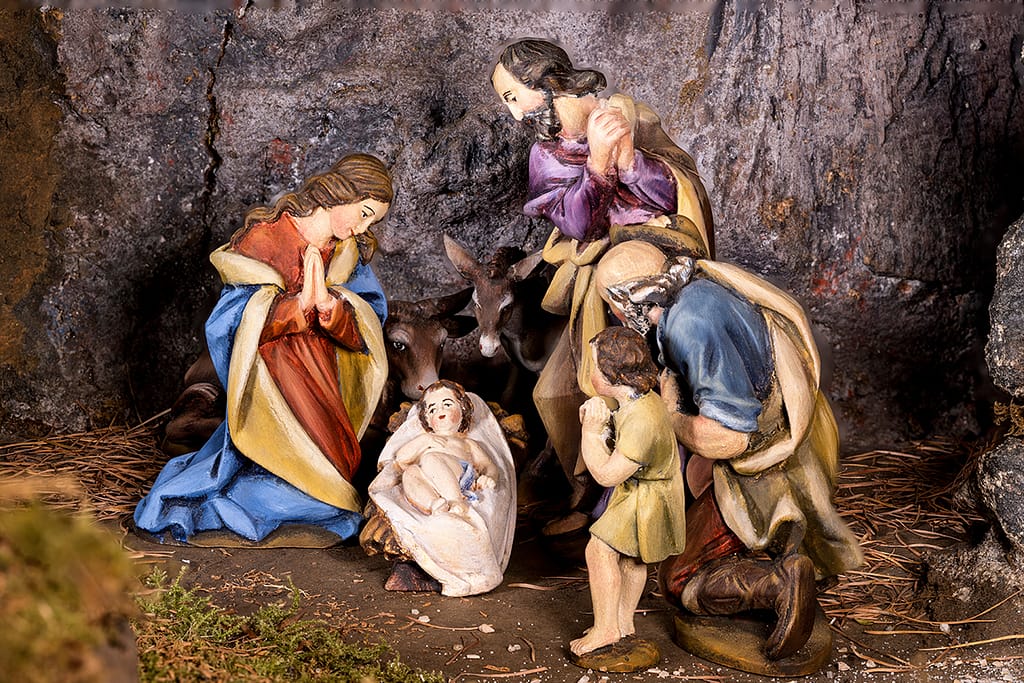
Tirolean nativity scenes are an integral part of Austrian Christmas celebrations, with elaborate crèches displayed in churches and homes throughout the region. These representations of the Nativity Scene are one of the oldest and most cherished Christmas traditions in many Tirolean households.
These intricate and beautiful displays are a testament to the artistic skill and devotion of the people who create them. In fact, the tradition of handmade cribs in Salzburg has its origins in an ordinance issued in 1782 by Emperor Joseph II, which prohibited churches from displaying their nativity scenes. This led to the creation of private exhibitions of handmade cribs in the Salzkammergut region.
The Tirolean nativity scenes not only showcase the artistic talents of the local people, but also serve as a reminder of the religious significance of the Christmas season, reinforcing the importance of faith and devotion during this special time of year.
Rauhnächte: Averting Bad Fortune
Rauhnächte is a mystical period between Christmas and Epiphany (January 6), during which Austrians perform rituals and customs to avert bad fortune. One such custom involves the burning of incense in farmhouses and stables to protect animals from any possible negative influence during this time.
Another Rauhnächte tradition is the “Schluckbildchen” custom, where individuals consume small notes depicting the Virgin Mary to ward off misfortune. The practice of attentively listening to sounds on the longest night of the year, known as “Losen,” is believed to foretell one’s destiny for the upcoming year.
These mystical customs serve as a reminder of the powerful connection between humans and the natural world, as well as the importance of maintaining a balance between the physical and spiritual realms during this magical time of year.
The Three Magi: Caspar, Melchior, and Balthasar
The Three Magi – Caspar, Melchior, and Balthasar – play a significant role in Austrian Christmas traditions. As part of these celebrations, children dress up as the wise men and go door-to-door, collecting money for charitable causes.
This tradition not only brings joy to the children who participate, but also teaches them the importance of generosity and compassion during the holiday season. The act of giving and helping those in need is a valuable lesson that aligns with the true spirit of Christmas.
The story of the Three Magi is a powerful reminder of the importance of humility, wisdom, and generosity, qualities that lie at the heart of the Christmas season. By engaging in this tradition, Austrian children learn to embrace these values and carry them forward into their own lives.
Fun Facts About Austrian Christmas
Austrian Christmas is full of interesting facts and unique customs that add a touch of enchantment to the holiday season. One such example is the Light of Peace from Bethlehem, a flame brought to Vienna and then distributed throughout the country. This symbol of hope and unity serves as a reminder of the importance of coming together during this special time of year.
Another fascinating aspect of Austrian Christmas is the Perchten Runs in the Alps, where individuals dress up as mythical figures representing good and evil spirits, traversing through villages to expel winter spirits. These spectacular performances showcase the rich cultural heritage of the region and add a touch of magic and mystery to the holiday celebrations.
Austrian Christmas also has a strong influence on music and the arts, with winter themes frequently featured in classical compositions by Austrian musicians such as Leopold Mozart, Schubert, and Strauss. These timeless creations continue to inspire and captivate audiences around the world, adding a touch of Austrian charm to the Christmas season.
Summary
Austrian Christmas is a magical time filled with unique customs, delicious treats, and heartwarming traditions that bring the country together in celebration. From festive markets and Tirolean nativity scenes to the mystical Rauhnächte and the generosity of the Three Magi, these traditions capture the essence of the holiday season and serve as a reminder of the importance of love, compassion, and unity during this special time of year.
Frequently Asked Questions
On Christmas Eve, families in Austria gather to decorate the Christmas tree, attend a Christmas mass and open one living room window to allow the “Christkind” to bring presents.
During Advent, candles are lit and carols sung, while towns will have Christmas markets selling food, decorations and Glühwein (mulled wine).
An Austrian Christmas is a magical experience, with twinkling fairy lights, delicious aromas from the Christmas markets, and beautiful snowy landscapes creating a festive atmosphere.
The Christmas markets are a highlight of the festive season, with stalls selling traditional Austrian treats such as gingerbread, marzipan, and mulled wine. There are also plenty of handmade gifts and decorations to choose from.
Austrians typically enjoy Weihnachtsgans (Christmas Goose) or Gebackener Karpfen (fried carp) with dumplings, red cabbage and potatoes on Christmas day or Christmas Eve.
Roast turkey is also becoming a popular alternative.
Vanillekipferl, Spitzbuben, and gingerbread are some of the most beloved Christmas cookies in Austria.
Krampus plays an important role in Austrian Christmas traditions as the companion of Saint Nicholas, responsible for disciplining naughty children by wielding a rod.
He is often depicted as a horned, anthropomorphic figure wearing a fur suit and carrying a bundle of birch sticks. Krampus is said to capture naughty children in his sack and take them away to his lair.
